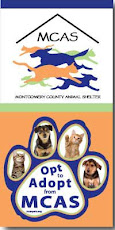I found a copy of “The Golden Stamp Book of Dogs” at a thrift store this week and while flipping through the pages, I was struck by the way breed standards have changed over the years. The edition I have was printed in 1966, but bears a 1953 copyright, indicating when the photos used in the stamps were taken. What caught my eye was the page about Labrador Retrievers.
The stamp featured a glossy coated Black Lab, which was interesting, since Yellow Labs are by far the more popular of the two main coat colors. I did a Google search for “black Labrador retriever,” and about one-third of the photos showed Yellow or Golden Labs. Chocolate and even “Silver” Labs also came up in the search results.
More significantly, what I noticed about the Lab in the Golden Book stamp was how different the body types are today. Labs are extremely popular in Texas, both as pets and hunting dogs. The purebreds I see at the dog parks are huge—with wide, blocky heads, deep jowls, broad chests, with thick barrels, fuller, longer-haired tails, and plushy coats. The photos below are from breeders’ Internet sites and are typical of the purebred Labs in my area.
More significantly, what I noticed about the Lab in the Golden Book stamp was how different the body types are today. Labs are extremely popular in Texas, both as pets and hunting dogs. The purebreds I see at the dog parks are huge—with wide, blocky heads, deep jowls, broad chests, with thick barrels, fuller, longer-haired tails, and plushy coats. The photos below are from breeders’ Internet sites and are typical of the purebred Labs in my area.
I don’t have any hard data to support this, but the “Labs” that arrive at my Shelter every day tend to resemble the dog in the stamp photo. They are lighter-boned, with higher tucks in the flank, leaner barrels, more tapered heads, less conspicuous dewlaps and jowls, and generally have shorter, sleeker coats. Mind you, many of our animals are what horse people would call “grade” level, even if they are purebred. And a large number of our Labs are mixed breed, primarily Pit Bull, but also Vizla, Catahoula, or Rhodesian Ridgeback.
Still, many of our Shelter Labs are dead-ringers for the old-school Labs shown on the stamp. It’s amazing to look back to see how standards have affected an individual breed.
Check out this video from a breeder of German Shepherd dogs to see how the standards of the “German” and “American” lines have altered the profile of the “champion” GSD.
However, if you’re in Texas and are looking for a Lab, come check out our Old-School Labs at MCAS!













Wow! My lab cross looks exactly like an old-school lab! The tail is so different, yet it seems to be a big detail on labs nowadays. Everything is so thick, but I imagine old-school labs are much more athletic.
ReplyDeleteThis is really interesting! Having watched/seen dog shows, I know what a purebred Lab is "supposed" to look like: to wit, the ones you've depicted from local breeders. However, what I mostly see around here (MO) are Labs that look like the old-school ones in your book, and the ones you see at the shelter. I have even gone so far as to ask people I see at the dog park, "What breed is your dog?" and when they respond, "Purebred Lab," it's all I can do not to laugh. I'm sorry, I'm sure they are very sweet, loving, wonderful family pets but they are NOT purebred. Or if they are, people are really being taken for a ride... and the AKC. Guess the latter doesn't care as long as the paperwork is in order. :-/ (This is actually a pet peeve of mine with many breeds. I don't know why it aggravates me when people brag about their blasted purebred, when the dog is the worst possible crappy example of its breed there ever was...if it is, in fact, even a purebred. Yes, I'm glad the dog has a loving home, of course, but PLEASE somebody be honest and tell them it's a mutt!)
ReplyDelete